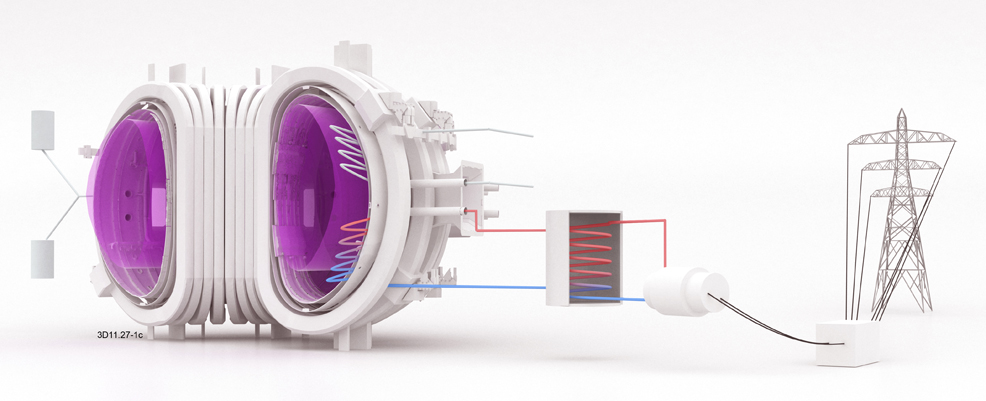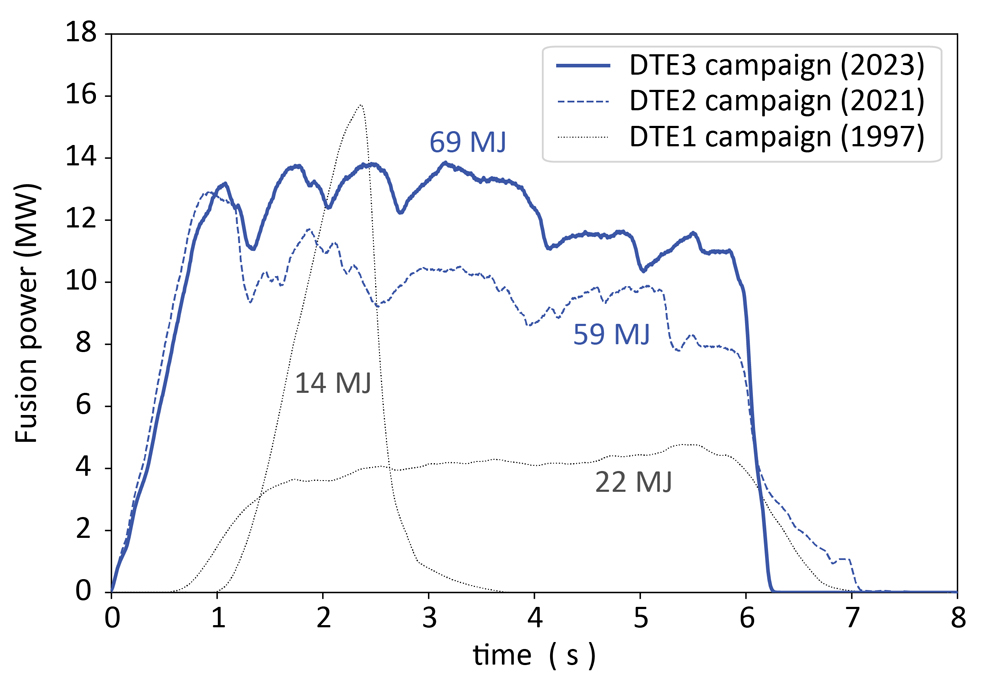Researchers have successfully generated 69 megajoules (MJ) of energy using the Joint European Torus (JET) – the largest amount ever in a fusion experiment and a new world record.
The Joint European Torus (JET), one of the largest and most powerful fusion reactors, recently set a new world record for energy output. In a single 'pulse' lasting for six seconds, it generated 69 megajoules (MJ). Using only 0.2 milligrams of fusion fuel, this released the same energy as burning ten times as much fossil fuel, but without any greenhouse gas emissions.
Fusion, the process that powers stars like our Sun, promises a clean baseload source of heat and electricity for the long term, using small amounts of fuel that can be sourced worldwide from inexpensive materials.
When a mix of deuterium and tritium (two forms of hydrogen) is heated to form a controlled plasma at extremely high temperatures – 10 times hotter than the core of the Sun – they fuse together to create helium, releasing energy. Deuterium and tritium are two heavier variants of ordinary hydrogen and together offer the highest reactivity of all fusion fuels. Despite its temperature of 150 million degrees Celsius, fusion is inherently safe, in that it cannot start a run-away process and produces no long-lived waste.
There are various ways of achieving fusion. JET's approach has been to hold the hot plasma using strong magnets in a ring-shaped machine called a "tokamak", and then to harness this heat to produce electricity in a similar way to existing power stations.

© United Kingdom Atomic Energy Authority
After a lifespan of 40 years, JET concluded its scientific operations in December 2023, and this week's announcement of the results is the last. But the data and insights it has provided will be invaluable for the development of ITER (International Thermonuclear Experimental Reactor) and future commercial reactors, promising a sustainable and virtually limitless energy source. JET's decommissioning process will now last until 2040.
"Our successful demonstration of operational scenarios for future fusion machines like ITER and DEMO, validated by the new energy record, instil greater confidence in the development of fusion energy," said Professor Ambrogio Fasoli, Programme Manager at EUROfusion, a consortium of European Union fusion research institutes who operate the JET facility in Oxfordshire, UK. "Beyond setting a new record, we achieved things we've never done before and deepened our understanding of fusion physics."
"JET has operated as close to power plant conditions as is possible with today's facilities, and its legacy will be pervasive in all future power plants. It has a critical role in bringing us closer to a safe and sustainable future," said Professor Sir Ian Chapman, CEO of the UK Atomic Energy Authority. "JET's research findings have critical implications not only for ITER – a fusion research mega-project being built in the south of France – but also for the UK's STEP prototype power plant, Europe's demonstration power plant, DEMO, and other global fusion projects, pursuing a future of safe, low-carbon, and sustainable energy."
"JET's final fusion experiment is a fitting swansong after all the groundbreaking work that has gone into the project since 1983. We are closer to fusion energy than ever before thanks to the international team of scientists and engineers in Oxfordshire," said Andrew Bowie, UK government Minister for Nuclear and Networks. "The work doesn't stop here. Our Fusion Futures programme has committed £650 million to invest in research and facilities, cementing the UK's position as a global fusion hub."
The graph below provides a nice visual comparison of the energy levels and their durations, with a combined total of more than 20 seconds and 164 MJ achieved over the years. JET's first deuterium‑tritium experiments in 1997 caused a brief spark of 14 MJ and a longer reaction of 22 MJ. The reactor maintained fusion for five seconds at high power and set a new world record of 59 MJ in 2021. Its latest and final result, the most successful yet, brings the dream of fusion power closer than ever.
With 10 times the toroidal vessel volume, ITER is likely to bring even greater advances when ignited in 2025. You can follow its progress, and that of many other fusion projects around the world, in our forum thread.

By FutureTimeLine









